
- Inspiring People -
- 8mins -
- 1,608 views
Gentle giants of the ocean: 10 fascinating facts about whale sharks – the world’s biggest fish
Magnificent and mysterious migratory leviathans of the deep, Whale Sharks are listed as endangered on the International Union for Conservation of Nature’s (IUCN) Red List, but there are things we humans can do and are doing to help.
gentle giants of the ocean: whale sharks up close
Few creatures on the planet inspire such awe and wonder. They are the largest shark species, and the largest fish on earth. These are whale sharks, leviathans of the deep, as mysterious as they are enormous, and they have never harmed a human.
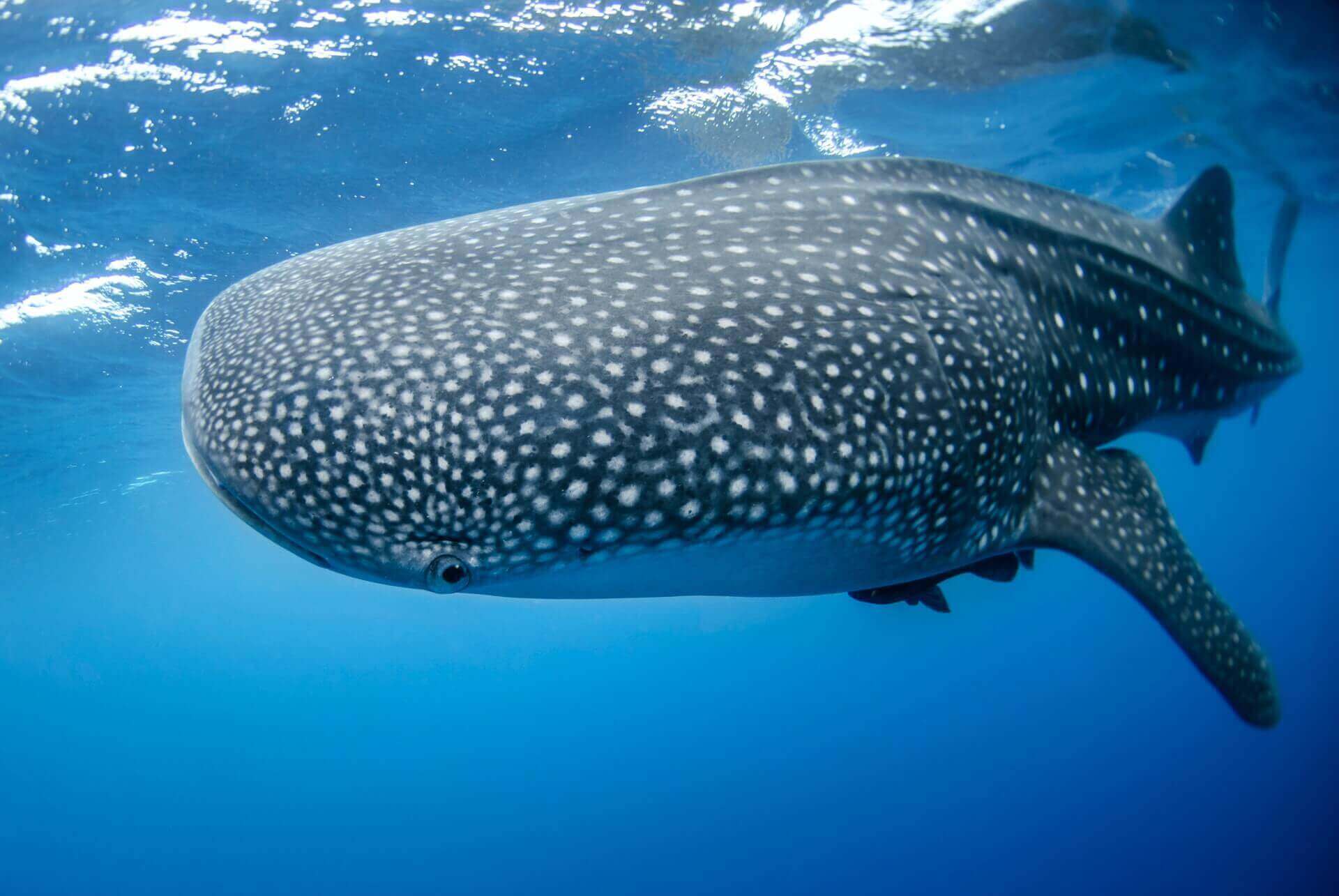
1. Whale sharks aren’t whales, but the worlds largest fish. These huge creatures can grow up to 12 metres long (about 65 feet), and weigh 75,000 pounds. A whale shark’s size rivals that of large whales, but despite their impressive proportions, whale sharks are often referred to as “gentle giants”. Source: Unsplash/NOAA
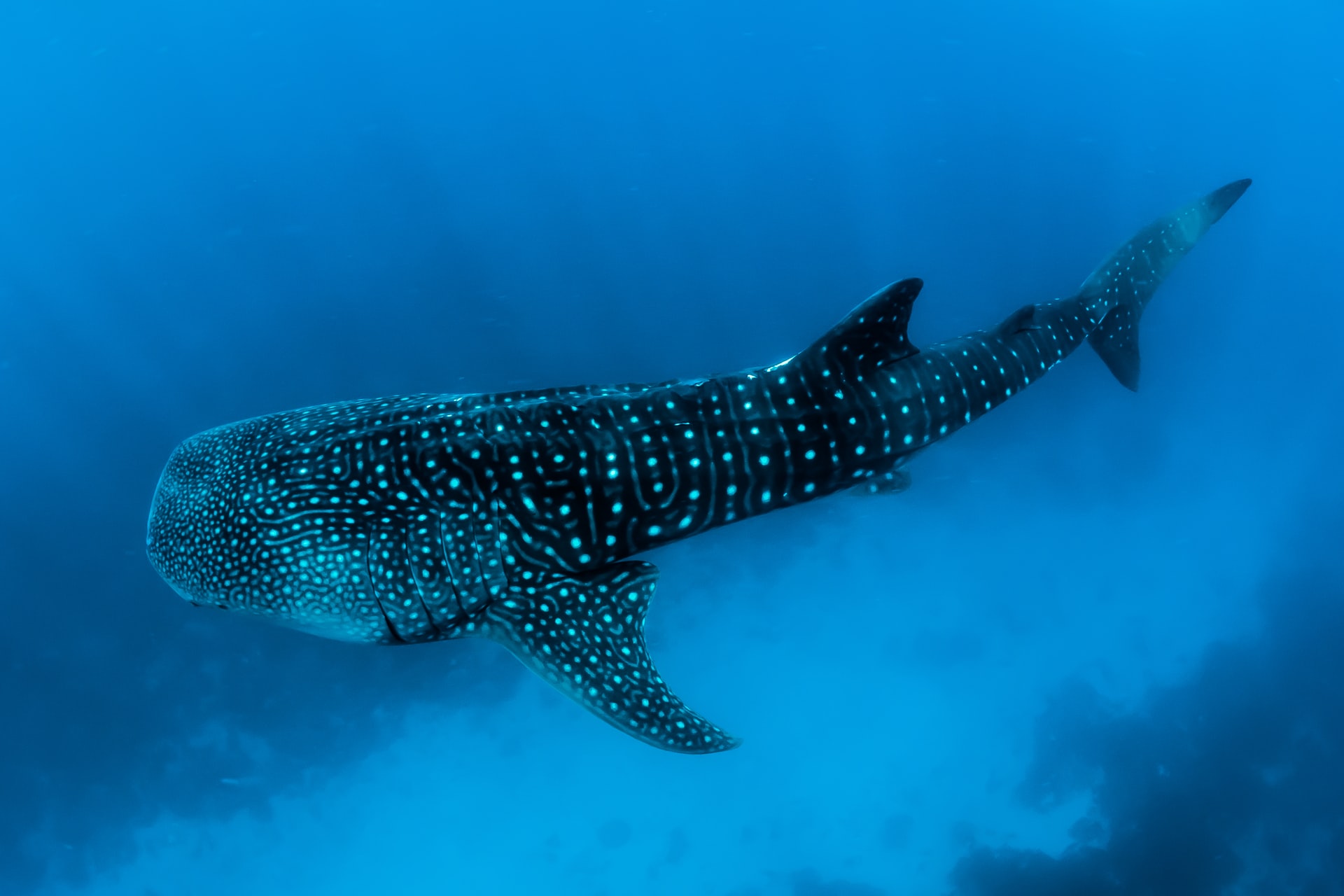
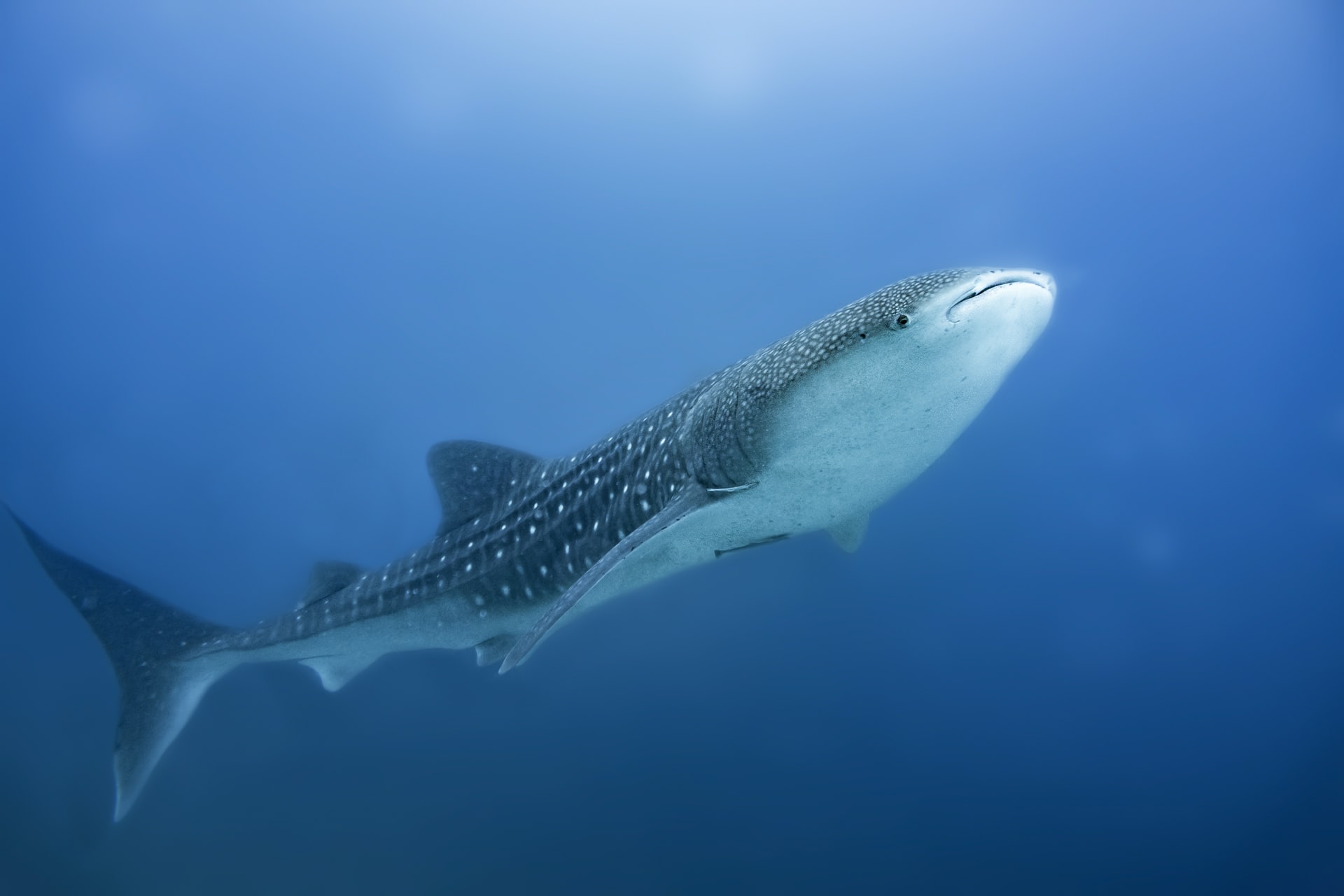
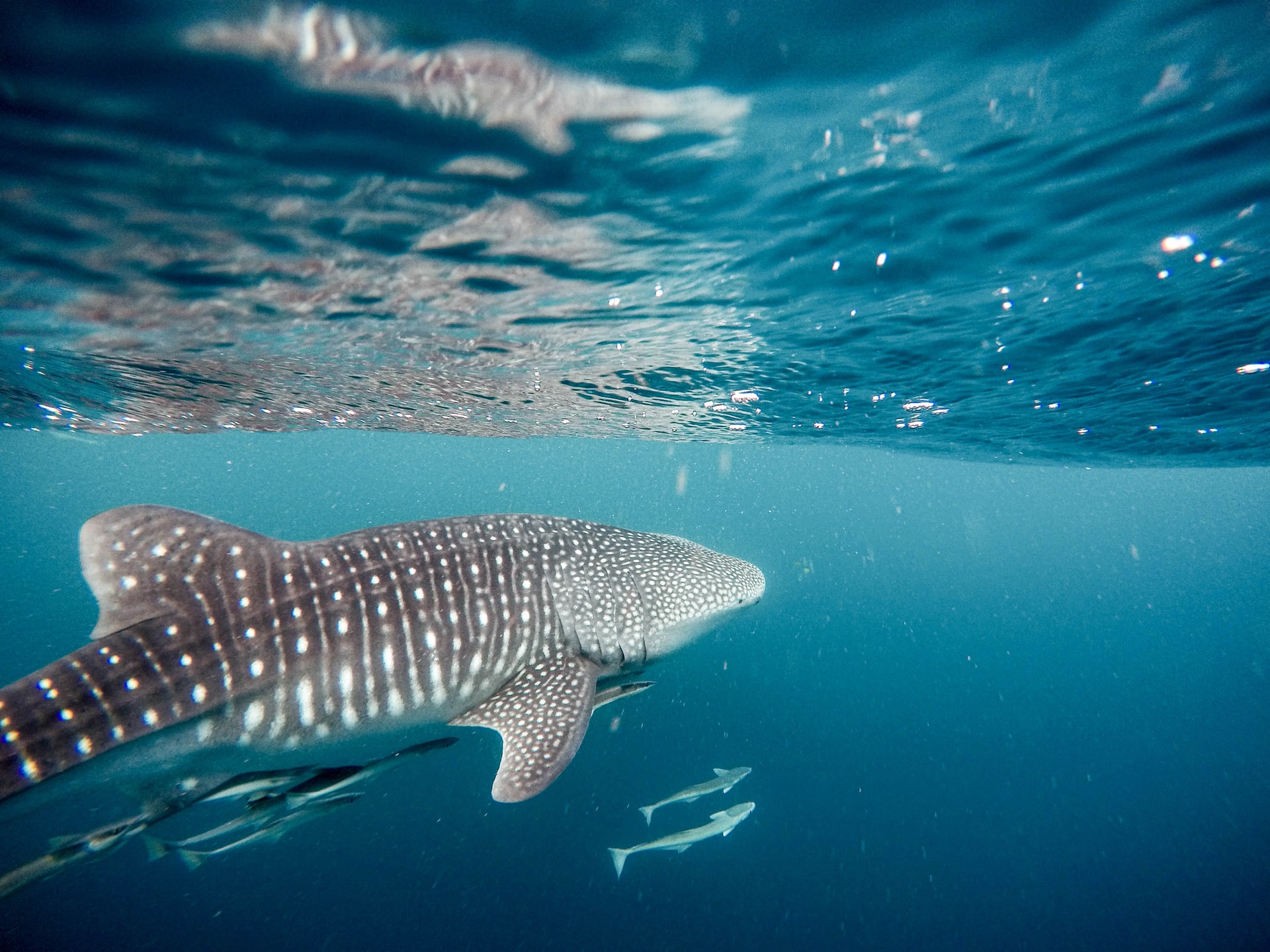
4. Whale sharks are slow swimmers and migrate a long way.
The movement of whale sharks was poorly understood until recent decades, when developments in tagging technology allowed scientists to tag whale sharks and observe their migrations. We know now that whale sharks are capable of undertaking migrations thousands of miles long—one tagged shark traveled 8,000 miles over 37 months. Mexico appears to be a popular spot for the sharks—in 2009, a “swarm” of over 400 whale sharks was seen off Mexico’s Yucatan Peninsula.
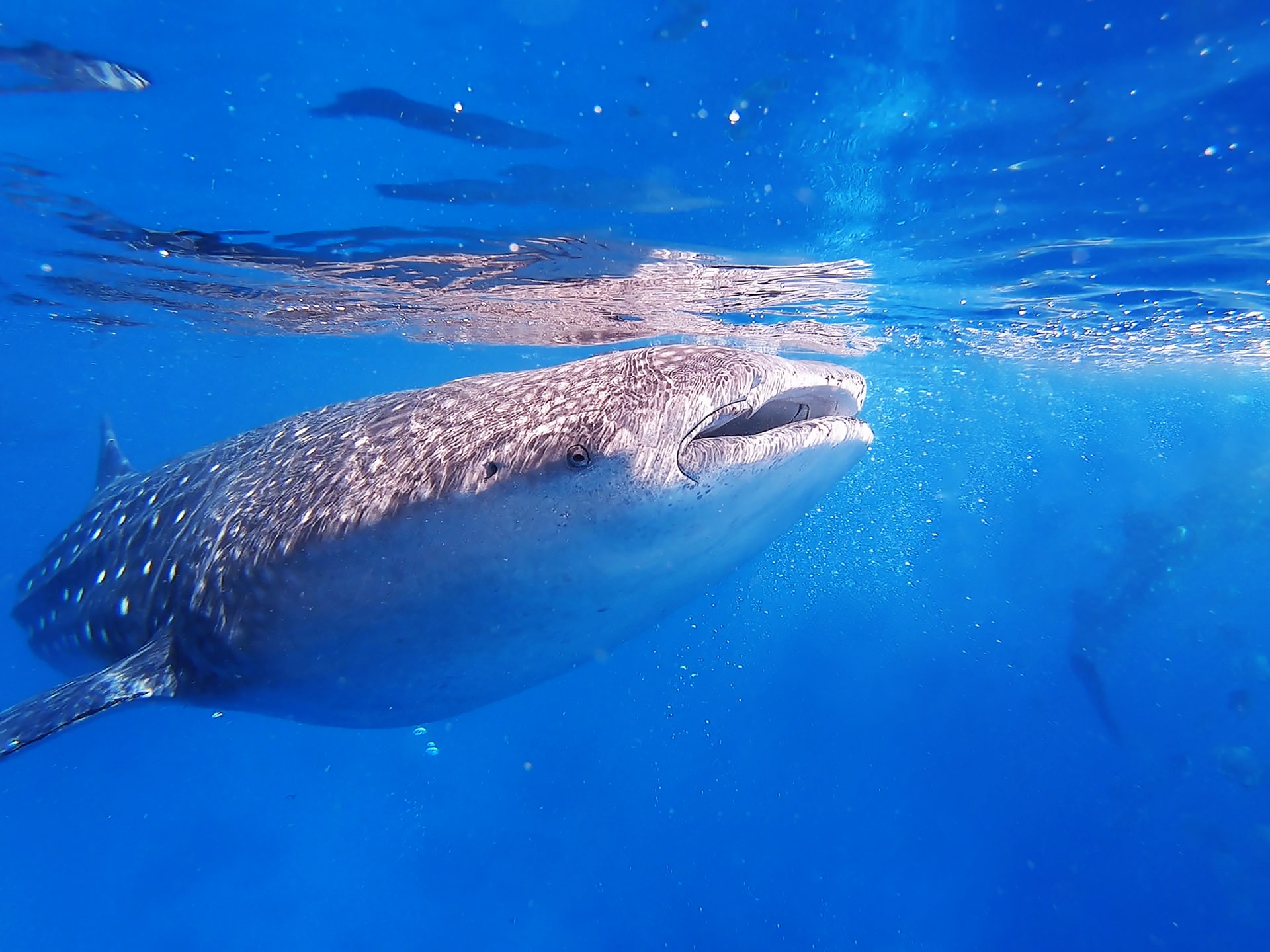
5. Along with other sharks, they are under threat. Many sharks are accidentally caught in fishing gear, as well as caught deliberately for their fins, which are a delicacy in Asia. Their ocean home is also in danger. From climate change warming the water – affecting both habitats, prey and shark population shifts – to plastic pollution, which could cause entanglement or be ingested, especially by filter feeders. Source: Unsplash/Olga Tsai
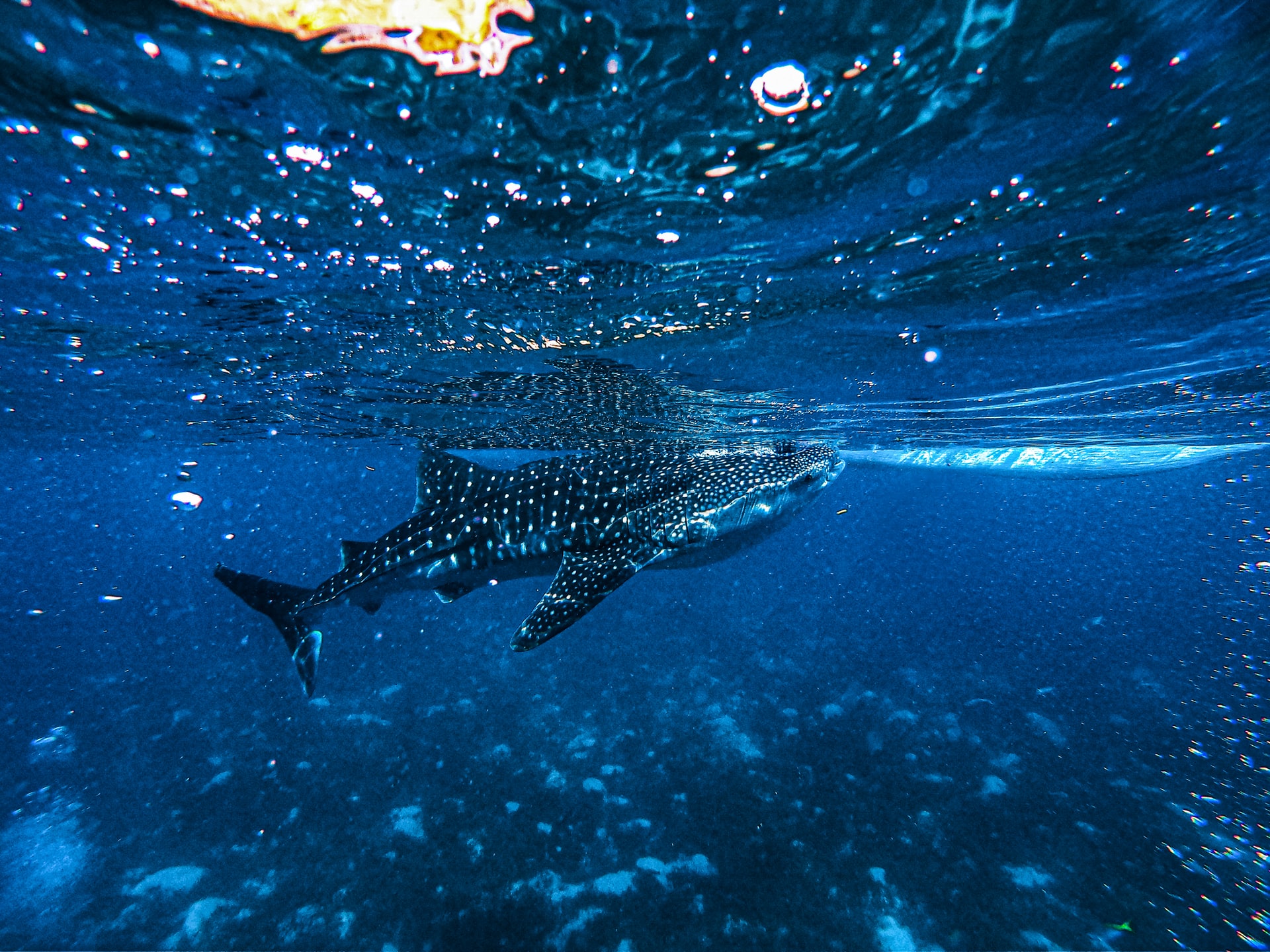
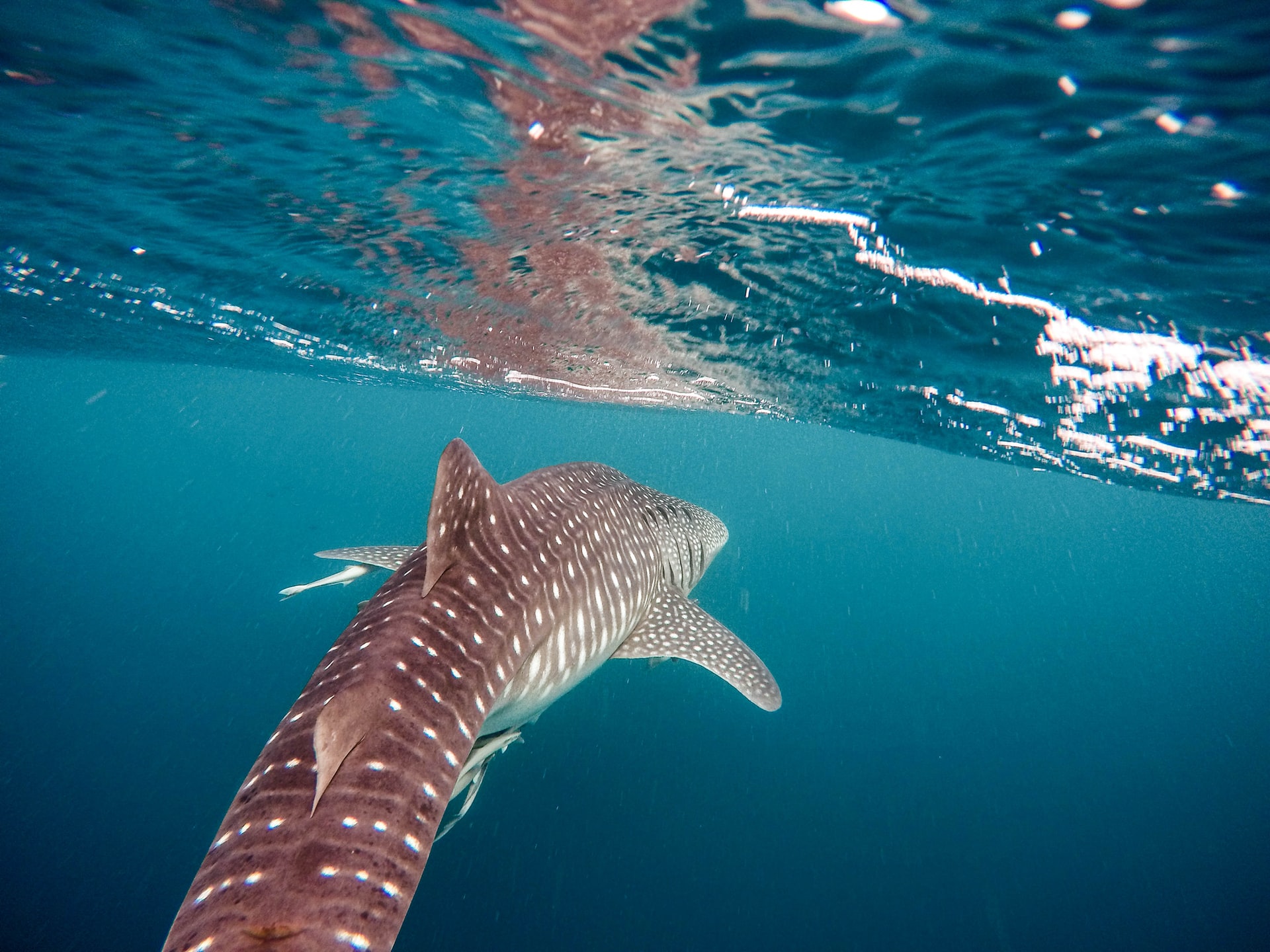
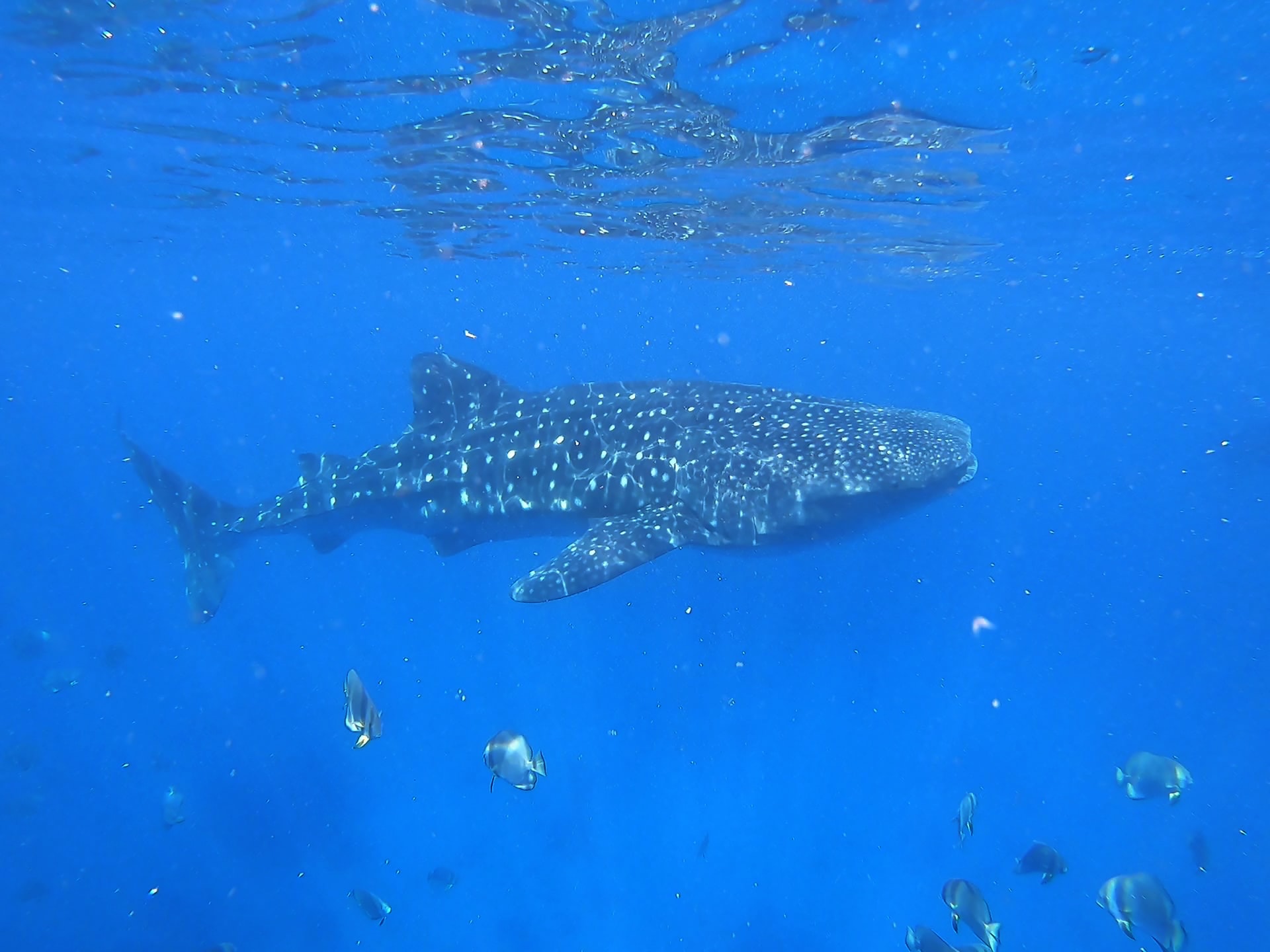
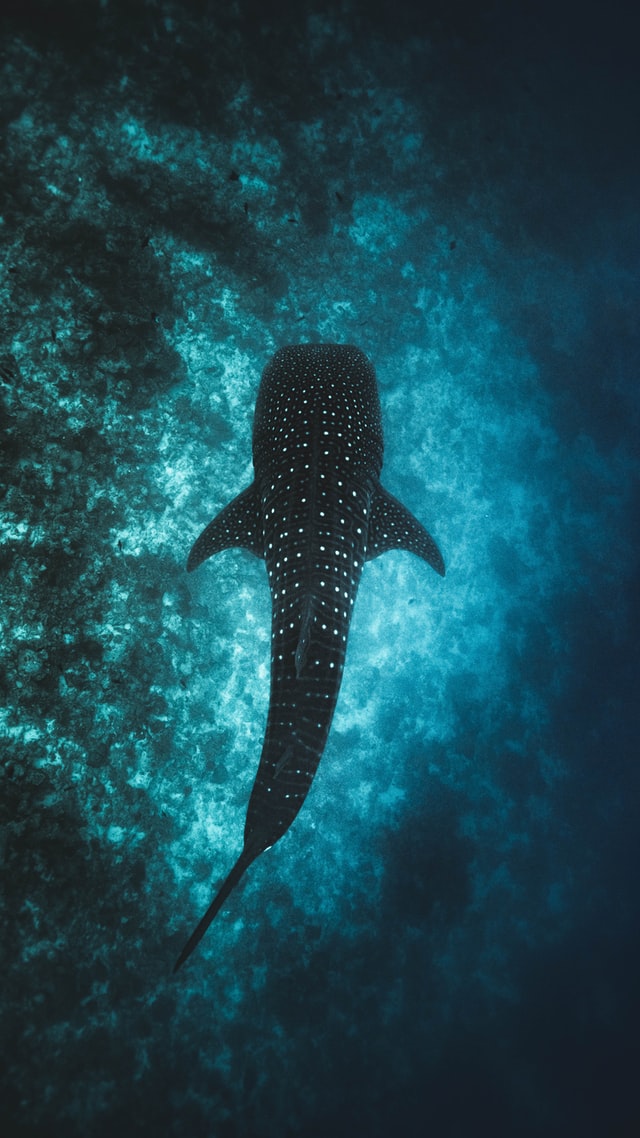
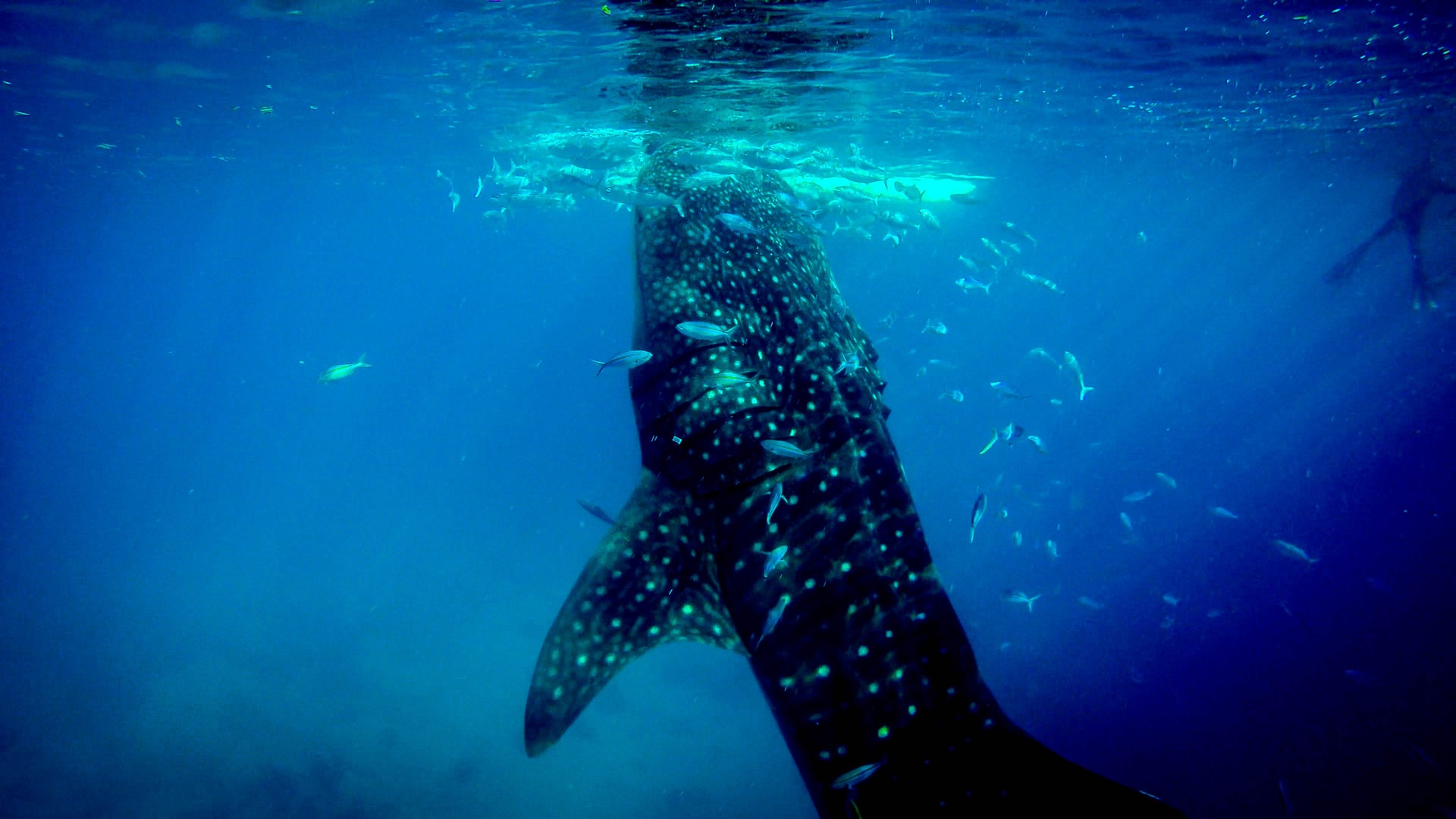
How Whale sharks help Maintain the Carbon Cycle in the Ocean
Carbon is a crucial element in the life cycle. It is important not just for the stability of ocean ecosystems but also for the entire universe. And because oceans are the world’s biggest carbon sinks, they play a vital role in the carbon cycle.
But how do sharks help the ecosystem in maintaining the carbon cycle?
Well, seagrass beds and other marine plants absorb and store billions of kilograms of carbon. However, as mentioned before, sea turtles and other herbivores pose a great danger to seagrass. In the absence of sharks, they can decimate entire seagrass meadows.
If these seagrass meadows are destroyed, more carbon is released, severely impacting oceans and making them more acidic. Acidic oceans pose a threat to marine life.
Destruction of seagrass meadows also limits the amount of carbon that oceans can absorb, accelerating global warming. So maintaining a stable carbon cycle is part of what sharks do to the ecosystem.
In addition, big sharks like whale sharks store significantly high amounts of carbon in their bodies. And when they naturally die, they sink to the ocean floor and become food for scavengers. This recycles the carbon.
Sharks also help to recycle carbon in the ocean by consuming the dead matter in the ocean. Therefore, interfering with the whale sharks’ ecosystem disrupts the carbon cycle.
Source: OurEndangeredWorld.com
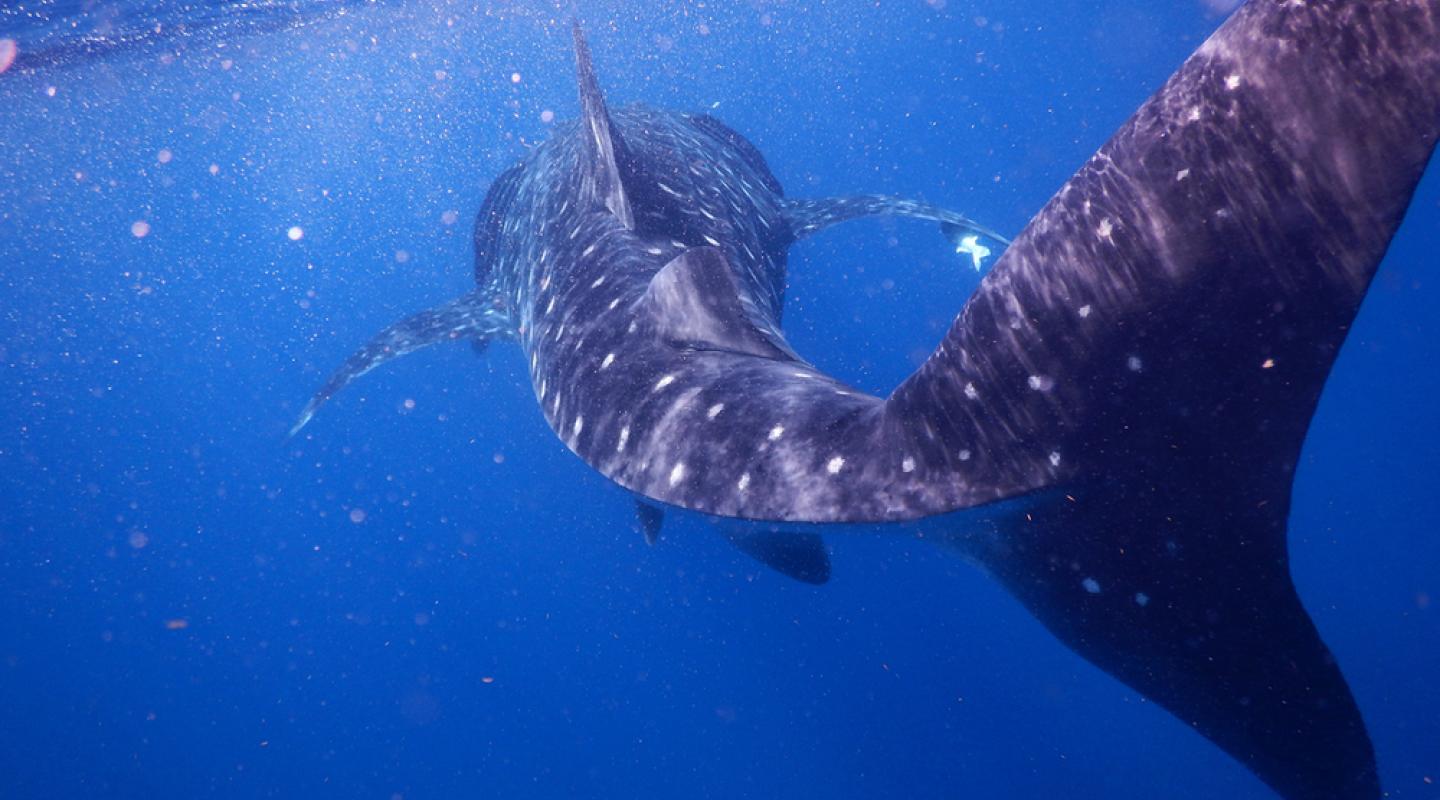
The shark finning trade is slowly decreasing, which is good news for all shark species. However, illegal fishing does still occur, meaning campaigning against this trade is essential in ensuring a growing Whale Shark Population. Image: © Sherry Magno/WWF Source: Sherry Magno/WWF
What can threaten whale sharks’ population growth and how can you help?
Classed as vulnerable on the IUCN Red List, the Whale Shark is a victim of the shark finning trade whereby overfishing can damage growing populations. As an internationally valued species, there is a high demand for Whale Shark meat, fins and oil which are usually obtained through illegal fisheries. Similarly, unsustainable fisheries often catch Whale Sharks by mistake, killing them in the by-catch process.
Recently, Whale Shark tourism has dramatically increased resulting in high numbers of humans swimming with these graceful creatures in their natural habitat. If done correctly, this can benefit the conservation status of the fish, however several operators see the activity as a profit maker, interrupting the Whale Sharks feeding process to entertain tourists. There have also been cases of boat/propeller injuries within this industry.
HOW CAN WE HELP THE WHALE SHARK?
Science! The main way we can help the Whale Shark is by using scientists to discover more information regarding their life cycles, habitats and overall behaviour. This information can allow specific conservation plans to be put in place, and allocate areas to be protected. The more we know, the more we can do!
The shark finning trade is slowly decreasing, which is good news for all shark species. However, illegal fishing does still occur, meaning campaigning against this trade is essential in ensuring a growing Whale Shark Population.
If visiting or taking part in a Whale Shark diving activity, make sure the operator is a trusted and sustainable company. Most conservation focused providers make this clear prior to your dive!
Sources: OneKindPlanet | WWF | ThoughtCo | WhaleSharksEndangered | OurEndangeredWorld

Whale Shark tourism has dramatically increased resulting in high numbers of humans swimming with these graceful creatures in their natural habitat. If done correctly, this can benefit the conservation status of the fish, however several operators see the activity as a profit maker, interrupting the Whale Sharks feeding process to entertain tourists. Source: OurEndangeredWorld
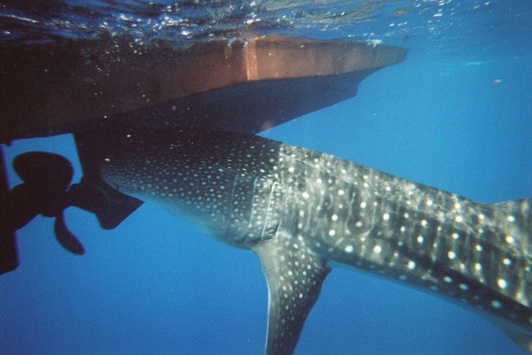

This article was originally posted on Apr 27, 2022.

